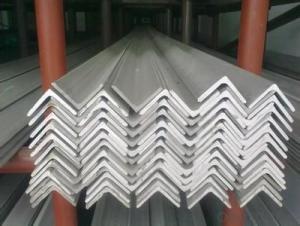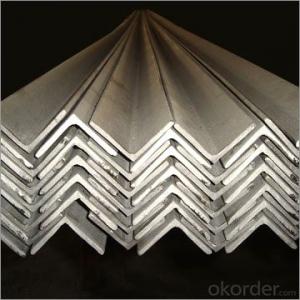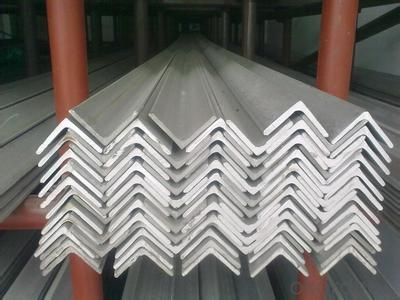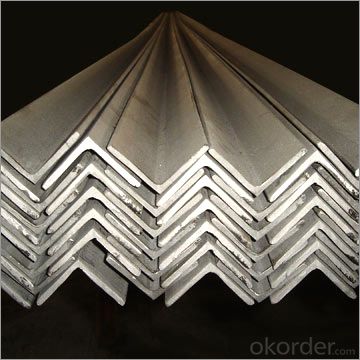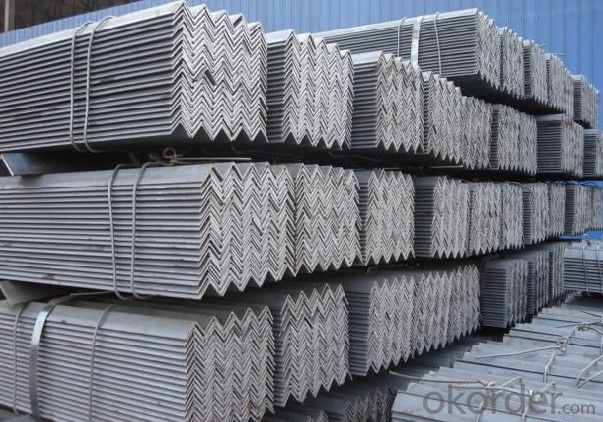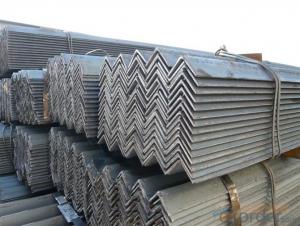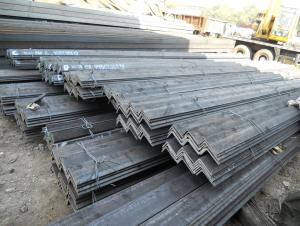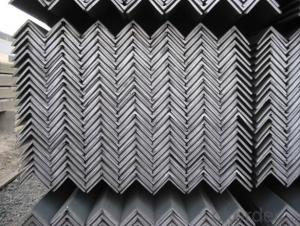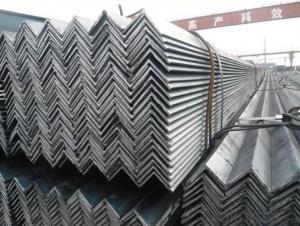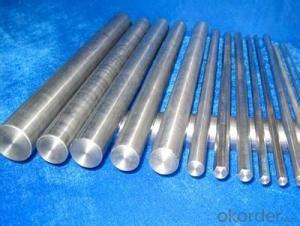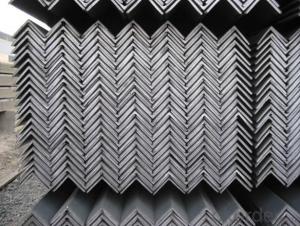ANGLE STEEL HOT ROLLED 20MM-250MM S235JR S335JR
- Loading Port:
- Tianjin
- Payment Terms:
- TT OR LC
- Min Order Qty:
- 25 m.t.
- Supply Capability:
- 200000 m.t./month
OKorder Service Pledge
OKorder Financial Service
You Might Also Like
Specification
Product Description:
OKorder is offering high quality Hot Rolled Steel I-Beams at great prices with worldwide shipping. Our supplier is a world-class manufacturer of steel, with our products utilized the world over. OKorder annually supplies products to European, North American and Asian markets. We provide quotations within 24 hours of receiving an inquiry and guarantee competitive prices.
Product Applications:
According to the needs of different structures, Angle can compose to different force support component, and also can be the connections between components. It is widely used in various building structures and engineering structures such as roof beams, bridges, transmission towers, hoisting machinery and transport machinery, ships, industrial furnaces, reaction tower, container frame and warehouse etc
Product Advantages:
OKorder's ANGLE STEEL HOT ROLLED 20MM-250MM S235JR S335JR are durable, strong, and resist corrosion.
Main Product Features:
· Premium quality
· Prompt delivery & seaworthy packing (30 days after receiving deposit)
· Corrosion resistance
· Can be recycled and reused
· Mill test certification
· Professional Service
· Competitive pricing
Product Specifications:
Manufacture: Hot rolled
Grade: Q195 – 235
Certificates: ISO, SGS, BV, CIQ
Length: 6m – 12m, as per customer request
Packaging: Export packing, nude packing, bundled
Sizes: 25mm-250mm | ||||||||||||
a*t | ||||||||||||
25*2.5-4.0 | 70*6.0-9.0 | 130*9.0-15 | ||||||||||
30*2.5-6.6 | 75*6.0-9.0 | 140*10-14 | ||||||||||
36*3.0-5.0 | 80*5.0-10 | 150*10-20 | ||||||||||
38*2.3-6.0 | 90*7.0-10 | 160*10-16 | ||||||||||
40*3.0-5.0 | 100*6.0-12 | 175*12-15 | ||||||||||
45*4.0-6.0 | 110*8.0-10 | 180*12-18 | ||||||||||
50*4.0-6.0 | 120*6.0-15 | 200*14-25 | ||||||||||
60*4.0-8.0 | 125*8.0-14 | 250*25 | ||||||||||
FAQ:
Q1: Why buy Materials & Equipment from OKorder.com?
A1: All products offered byOKorder.com are carefully selected from China's most reliable manufacturing enterprises. Through its ISO certifications, OKorder.com adheres to the highest standards and a commitment to supply chain safety and customer satisfaction.
Q2: How do we guarantee the quality of our products?
A2: We have established an advanced quality management system which conducts strict quality tests at every step, from raw materials to the final product. At the same time, we provide extensive follow-up service assurances as required.
Q3: How soon can we receive the product after purchase?
A3: Within three days of placing an order, we will begin production. The specific shipping date is dependent upon international and government factors, but is typically 7 to 10 workdays.
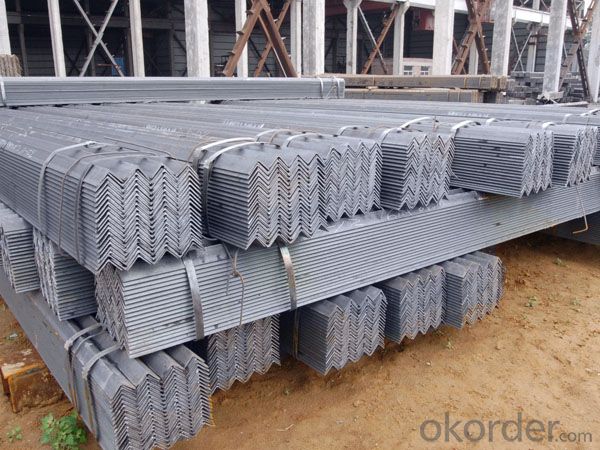
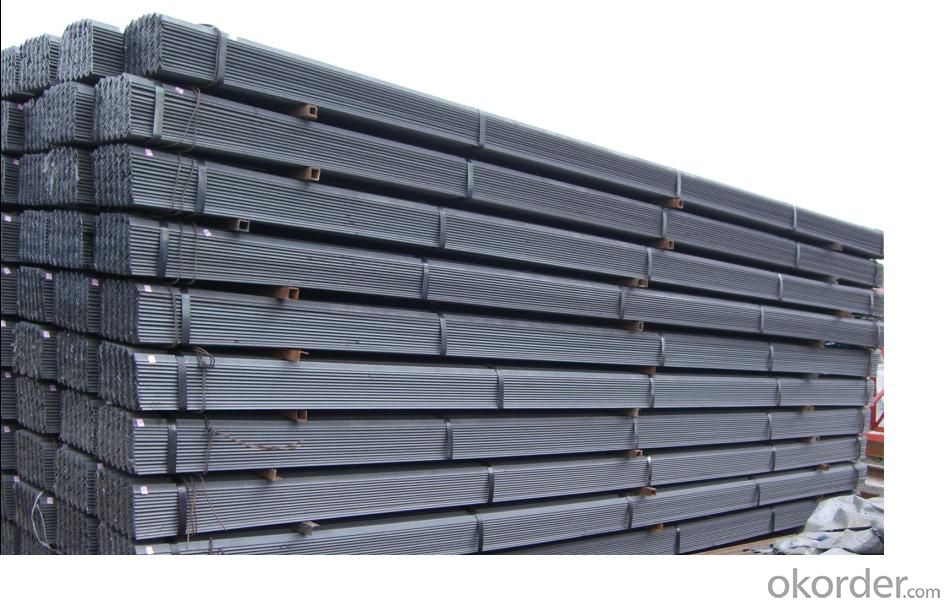
- Q: Can steel angles be used for structural applications?
- Yes, steel angles can be used for structural applications. Steel angles are commonly used in construction and engineering projects due to their strength, durability, and versatility. They are particularly useful in providing structural support and stability, as they can be easily welded, bolted, or otherwise connected to other steel components. Steel angles are often utilized in the construction of frames, supports, braces, and reinforcements. Additionally, their shape and design allow for efficient load-bearing capabilities, making them suitable for various structural applications such as bridges, buildings, towers, and industrial structures. Overall, steel angles are a reliable and cost-effective choice for structural applications.
- Q: What are the different methods for cleaning steel angles?
- There are several methods that can be used to clean steel angles effectively. 1. Mechanical Cleaning: This method involves using abrasive tools such as wire brushes, sandpaper, or abrasive wheels to physically scrub away dirt, rust, or other contaminants from the surface of the steel angles. This method is commonly used for light cleaning and can be done manually or with the help of power tools. 2. Chemical Cleaning: Chemicals can be used to remove stubborn stains, rust, or other types of corrosion from steel angles. Acid-based cleaners, such as phosphoric acid or hydrochloric acid, are often used for this purpose. However, it is important to handle these chemicals with caution and follow the manufacturer's instructions to ensure safety and prevent any damage to the steel. 3. Electrolytic Cleaning: This method involves the use of an electrolyte solution and an electrical current to remove rust and other contaminants from the steel angles. The steel angle is submerged in the electrolyte solution, and the electrical current is applied, causing the rust or contaminants to dissolve and separate from the surface. This method is effective for cleaning heavily rusted steel angles but may require specialized equipment. 4. High-Pressure Water Cleaning: Using high-pressure water jets can effectively remove dirt, grime, and loose rust from steel angles. This method is environmentally friendly and does not require the use of chemicals. However, it may not be as effective for removing stubborn stains or heavy corrosion. 5. Blasting: Blasting is a method that involves shooting abrasive particles, such as sand, grit, or beads, at high speeds onto the surface of the steel angles. This process helps to remove rust, paint, and other contaminants. It is commonly used for heavy-duty cleaning or surface preparation before painting or coating. It is important to choose the appropriate method based on the extent of contamination, the condition of the steel angles, and the desired outcome. In some cases, a combination of methods may be necessary to achieve the best results.
- Q: What is the standard tolerance for steel angles?
- Depending on the specific requirements and industry standards, the standard tolerance for steel angles can vary. Typically, the permissible variation in dimensions such as length, width, and thickness is used to specify the standard tolerance for steel angles. These tolerances guarantee that the angles meet the necessary specifications and are suitable for different applications. To determine the specific tolerance requirements for steel angles in a particular context, it is important to refer to relevant industry standards or specifications provided by organizations like ASTM or AISC.
- Q: Are steel angles resistant to extreme weather conditions?
- Known for their durability and strength, steel angles are highly resistant to extreme weather conditions. Typically made from hot-rolled steel, which possesses excellent weathering properties, these angles exhibit a high tensile strength and can endure harsh conditions like heavy rainfall, high winds, and extreme temperatures. Additionally, steel angles possess corrosion-resistant properties, enabling them to withstand exposure to moisture and humidity without rusting or deteriorating. This characteristic makes them ideal for outdoor applications where they may encounter rain, snow, or other environmental factors. Moreover, steel angles offer exceptional stability and maintain their shape and structural integrity even under the harshest weather conditions. They are specifically designed to provide support and stability to structures, rendering them perfect for use in buildings, bridges, and other infrastructure projects that need to withstand hurricanes, earthquakes, or other severe weather events. In summary, steel angles are an exceptional choice for applications that demand resistance to extreme weather conditions. Their strength, durability, and corrosion resistance make them a dependable and long-lasting alternative for outdoor structures.
- Q: Are steel angles susceptible to rusting?
- Yes, steel angles are susceptible to rusting.
- Q: What are the different surface treatments available for steel angles?
- There are several surface treatments available for steel angles, including galvanization, painting, powder coating, and epoxy coating.
- Q: Can steel angles be used for balcony railings?
- Indeed, balcony railings can be crafted with steel angles. These angles are frequently employed in construction due to their robustness and resilience. They offer essential structural reinforcement and can be conveniently tailored to accommodate the precise measurements and design specifications of a balcony railing. Furthermore, steel angles can be adorned with paint or coatings to harmonize with the desired aesthetic of the balcony. Nevertheless, it is imperative to verify that the steel angles employed adhere to the essential safety regulations and building codes to safeguard the stability and security of the balcony railing.
- Q: How do steel angles contribute to the stability of a structure?
- A structure's stability is influenced by steel angles in several ways. Firstly, steel angles are widely used as structural members in buildings, bridges, and towers, providing strength and stability to the overall structure. Their unique shape, with one side longer than the other, enables them to withstand compression and tension forces, making them ideal for supporting heavy loads. Additionally, steel angles serve to create rigid connections between different structural components. By welding or bolting steel angles at critical joints, the load is evenly distributed, preventing excessive movement or deformation. This greatly enhances the stability and integrity of the structure, particularly in the face of dynamic loads such as wind or seismic forces. Moreover, steel angles can be effectively utilized as bracing elements. Bracing is essential for resisting lateral forces like wind or earthquake loads. By strategically placing steel angles diagonally between structural members, a triangulated system is formed, improving the overall stability of the structure. This bracing helps to minimize excessive sway or deflection, ensuring that the structure remains rigid and secure. Furthermore, steel angles possess exceptional durability and corrosion resistance, which is crucial for the long-term stability of a structure. They can withstand harsh environmental conditions, including moisture, UV radiation, and temperature fluctuations. This durability ensures that steel angles maintain their structural integrity over time, providing ongoing stability and safety. In conclusion, steel angles play a pivotal role in guaranteeing the stability of a structure. Their ability to withstand compression and tension forces, create rigid connections, act as bracing elements, and their durability make them indispensable in various construction projects. By incorporating steel angles in the design and construction process, engineers can enhance the stability, strength, and safety of the structure, ultimately providing a reliable and long-lasting solution.
- Q: How do steel angles perform in terms of thermal expansion and contraction?
- Steel angles have a low coefficient of thermal expansion, which means they are relatively resistant to expansion and contraction due to temperature changes. This makes them a reliable choice for structures that require stability and minimal distortion under varying thermal conditions.
- Q: How do steel angles perform under impact or dynamic loading conditions?
- Steel angles possess exceptional strength and durability, which makes them well-equipped to withstand impact or dynamic loading conditions. They are resistant to deformation, bending, and fracture when subjected to sudden forces or dynamic loads, thanks to their high tensile and yield strengths. The structural integrity and impact resistance of steel angles are enhanced by their L-shaped cross-section. The angle's flanges evenly distribute the load, effectively transferring the forces to the supporting structure. This design feature enables steel angles to efficiently absorb and distribute impact energy, minimizing the risk of failure or structural damage. In addition, steel angles demonstrate excellent fatigue resistance, enabling them to endure repeated or cyclic loading without weakening or experiencing fatigue failure. This quality is particularly important in applications where dynamic or fluctuating loads are common, such as bridges, cranes, machinery, and various structural components subjected to vibrations or dynamic forces. Furthermore, the impact resistance and toughness of steel angles can be further improved through various techniques, including heat treatment or alloying. These methods can increase the angle's hardness and strength, making it even more capable of withstanding severe impact or dynamic loading conditions. Overall, steel angles are a dependable choice for applications involving impact or dynamic loading conditions. Their combination of high strength, structural integrity, and fatigue resistance allows them to perform exceptionally well under such circumstances, ensuring the safety and longevity of the structures they are incorporated into.
Send your message to us
ANGLE STEEL HOT ROLLED 20MM-250MM S235JR S335JR
- Loading Port:
- Tianjin
- Payment Terms:
- TT OR LC
- Min Order Qty:
- 25 m.t.
- Supply Capability:
- 200000 m.t./month
OKorder Service Pledge
OKorder Financial Service
Similar products
Hot products
Hot Searches
Related keywords
